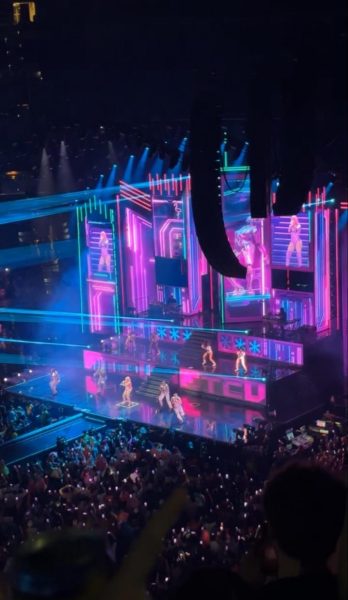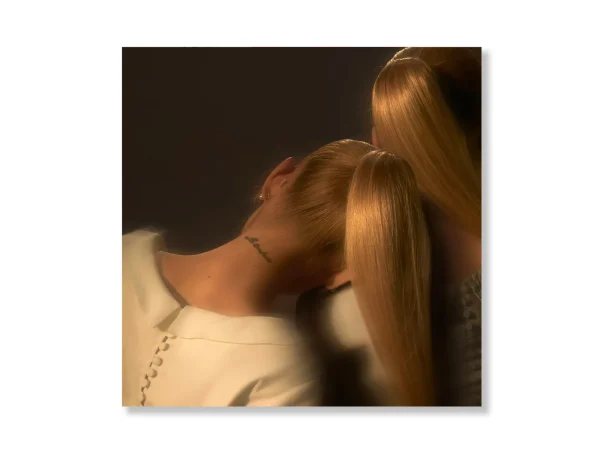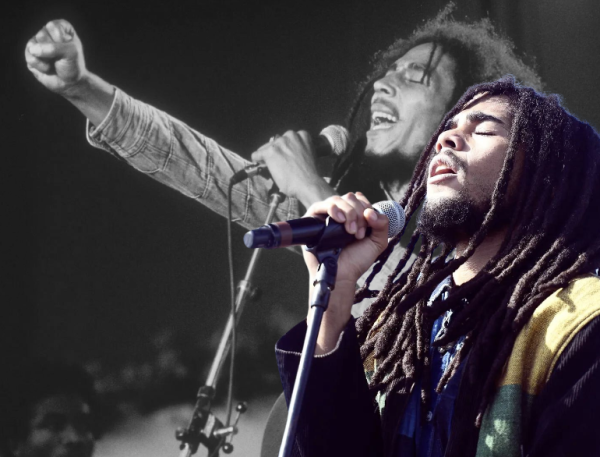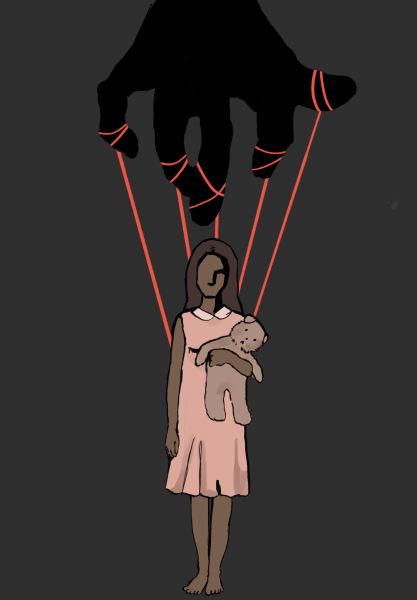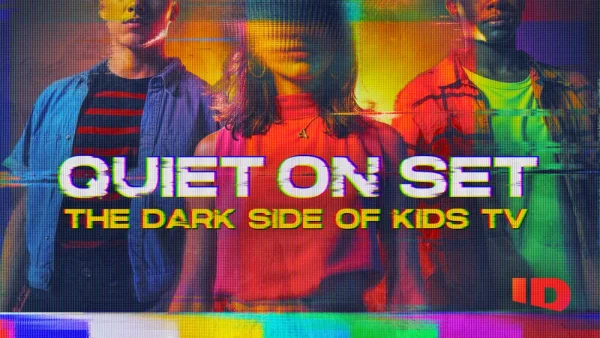The Force Awakens gives Star Wars fans more than a new hope for the third Star Wars trilogy

Courtesy of Walt Disney Studios Motion Pictures
“Star Wars: The Force Awakens,” released on December 18, 2015, begins the third Star Wars trilogy.
The galaxy’s most beloved space opera has returned to the big screen for the first time in over a decade, capturing the attention of Star Wars fans and non-Star Wars fans alike. The Force Awakens has catapulted the Star Wars saga back into the pop-culture mainstream, making the holiday season seem like an afterthought amidst all the excitement over the movie.
Truly, it is “Star Wars season” once again, and “may the force be with you” is the new “Merry Christmas.” And for good reason, too; The Force Awakens is a brilliant beginning to the third Star Wars trilogy, a sequel to the original trilogy that features new protagonists while still incorporating the old characters fans know and love into the story. Though the film suffers mildly from an all-too-familiar story line and classic Star Wars improbabilities, The Force Awakens is essentially every Star Wars fans’ dream, an action-filled, quirky, and emotional space odyssey that feels as fresh as the originals.
Viewers of The Force Awakens will notice, first and foremost, that the film is really, really fast. Action-packed fighting scenes between the First Order Storm Troopers and Resistance fighters are exhilarating, moving at breakneck speed and literally forcing viewers to shift their heads in order to fully absorb all the action taking place on screen. The Millennium Falcon chase scene on Jakku contains perhaps the most notable example of this, as the screen flips upside down while following the path of the Falcon. Even many of the non-action scenes are fast-paced; dialogue between First Order leaders Kylo Ren and General Hux is filled with intensity as an internal power struggle becomes apparent, making for high-anxiety scenes that are essential to maintaining the film’s mood in between action. Fans of the original trilogy will be even more enthralled by these scenes, as they invoke the same tense dialogue used between Darth Vader and his generals before he choked many of them to death using the force.
The Force Awakens is kept fast largely due to a very central motif of running that is prevalent throughout the film. When the crew of veterans Han Solo and Chewbacca, droid BB8, scavenger Rey, and renounced Storm Trooper Finn arrive at the castle of Maz Kantana, an old friend of Han’s, Maz accurately observes that she sees in Finn’s eyes that he is a man who wants to run. Finn and the other protagonists do spend much of the film running from danger: Finn and captured Resistance pilot Poe Dameron run from the First Order onto a TIE fighter to escape Starkiller Base; Rey, Finn, and BB8 run from the First Order onto the Millennium Falcon to escape Jakku; and Han Solo and his crew run to the Falcon later to escape the space gangs threatening to kill Han. The continual running done throughout the film keeps viewers on edge, weary for the protagonists’ safety, another tool used to capture and maintain viewers’ sustained attention.
The film’s intensity is compounded by brilliant CGI, Star Wars’ classic, remarkable score, and invigorated sound design to complete these thrilling scenes. Visually, The Force Awakens is stunning. Moments of serenity like Rey crossing the screen on her cruiser backlit by the desert sunset, or the Falcon rounding a mountain on Takodana to reveal a luscious green landscape provide breathtaking breaks from the fighting and action that dominates the screen.
Of course, the visual effects during the action are far, far improved from those used in the original trilogy, creating a surreal experience that is even further enhanced when seen in 3D. Many films try and fail to use 3D technology, but The Force Awakens does not force its usage. Instead, it uses it to amplify viewers’ perspectives, like when Rey is exploring the depths of a fallen Star Destroyer. In this instance, the 3D assists in demonstrating how massive and cavernous the Star Destroyer is relative to Rey, taking what is a rather average shot in 2D and making it extraordinary.
The Force Awakens contains a rework of Star Wars’ classic score, which is largely considered the greatest film score of all time, written by composer John Williams. Though the score has endured six films already, it is anything but trite in The Force Awakens, as subtle modifications and new additions like a special soundtrack used for the First Order’s Supreme Leader Snoke maintain and set the film’s mood.
Sound design by Ben Burtt, who has also worked on all six of the previous Star Wars films, is more poignant than ever before. Classic sound effects like the buzz of a light saber and pew-pew of a blaster sound more menacing and realistic than they ever did in the original movies. This effect is particularly evident when Rey hears Kylo lurking in the woods, but he is not seen on-screen; only the ominous sound of his light saber opening, fizzling as Kylo awaits Rey, can be heard. These tiny details in sound effects make every one of Rey’s shots that Kylo deflects all the more devastating, and make Kylo that much more threatening.
The Force Awakens is also potentially the funniest of all the Star Wars films. This is largely due to a growing emphasis of comic relief in action movies, a trend that Co-writer and Director J.J. Abrams has helped propagate in many of his other films. Fortunately, Abrams finds a nice balance between serious and humorous. Moments like when Han sarcastically asks Chewie, “oh really? you’re cold?” while out in the snowy Starkiller Base tundra perform their function of providing humor to ease the edge, but do not detract from a scene’s overall-anxious mood.
Perhaps the most overlooked aspects of what makes The Force Awakens so captivating are the dynamic characters and their development throughout the movie. The new characters introduced in this movie, particularly Kylo and Rey, are extremely compelling. Their various backgrounds, attitudes, and actions give each character versatile personalities on which this newest Star Wars trilogy can lay a solid foundation without having to rely on the presence of old favorites like Han and Princess Leia.
Kylo, portrayed by Adam Driver, exhibits this dynamic character better than any character in the movie. He first appears walking onto the scene of a First Order siege of a Jakku village in a manner strikingly reminiscent of how Darth Vader first appears in Star Wars’ first movie, A New Hope (1977). His voice is deep and threatening like Vader’s too, and he immediately makes a devastating impression by ordering his storm troopers to kill all of the villagers. The son of Han and Leia, Kylo hopes to “finish what [Vader] started” and embodies Vader in doing so. Yet, unlike the stern, unforgiving Darth Vader, Kylo is bursting with emotion. He has an unprecedented power over the force when he is in control of his emotions, but he demonstrates weakness when his emotions become more unstable. He also becomes increasingly less threatening when he removes his mask to reveal a pasty, long face, adding to his vulnerability. Thus, Kylo is already one of the Star Wars saga’s most interesting characters, contributing immensely to the allure of The Force Awakens.
The combination of all of these effects leads to not a single dull moment occurring throughout the entirety of the film. Every scene elicits emotion – some anger, some excitement, some fear – but never boredom. Many scenes and lines from the film rank among the most memorable Star Wars moments in the entire saga, such as the lightsaber battle between Kylo and Rey at the end of the movie, which is one of, if not the most intense lightsaber battle in the entire series.
Though The Force Awakens is riveting, it is not without its faults, the biggest of which are its eerily similar plot to A New Hope and improbable narrow escapes. To begin, there are simply too many parallels between The Force Awakens and A New Hope. At the core of the movies’ plots, they both begin with a droid given crucial information that ends up on a desert planet in the hands of a force-sensitive person with no knowledge of his or her powers. Smaller details are noticeably similar as well; the bar scene in Maz’s castle is essentially the same as the cantina scene in A New Hope, and Han’s debt getting him and his crew in trouble is another major plot point in both movies.
The two films’ similarities come off as a bit lazy by the writers, detracting from what is otherwise a fantastic movie. Yet, it is important to remember that the film is also catering to Star Wars fans that are familiar with A New Hope and the other two films in the original trilogy. Instead, the writers find far more success in catering to fans by incorporating many relics from the original films. These attempts at fanfare are very well done in that their purpose is not solely to elicit nostalgia for the original trilogy, but rather to set the film’s setting during a time following decades after the original movies ended. This effect is achieved through a fallen star destroyer lodged into the sand of the planet Jakku, Rey sporting a worn X-wing pilot helmet, and most importantly the Millennium Falcon, brilliantly revealed when Rey reluctantly boards the aircraft while attempting to escape Jakku after her primary ship had been destroyed, saying “the garbage will do.” These moments, among others, give The Force Awakens the familiar feeling that many of the parallel plot points fail to do.
Additionally, in classic Star Wars fashion, the film’s protagonists make a series of unlikely, narrow escapes in order to make the plot more convenient. Though these instances have been a part of the Star Wars series throughout, they may make it difficult for some viewers to suspend their disbelief. A particularly egregious instance of this occurs when Rey scales a massive wall on the inside of the Starkiller Base without a single Storm Trooper seeing her. Yet, though these moments can be frustrating, Star Wars is not a story made to be realistic, but rather exhilarating. Improbability is quintessentially “Star Wars,” going back to the original trilogy when both Leia and Han tell C-3PO to be quiet on numerous occasions as he attempts to tell them the odds of their success.
Still, The Force Awakens is so captivating that these minor “disturbances in the force” throughout the movie do not distract from the film much at all. In fact, the only thing able to distract me from the movie’s enthralling action was the iPhone alarm that set off during the film’s climax, 10 feet in front of me. The Force Awakens is an exhilarating adventure whether one is familiar with the original trilogy or not; for those who are, it is an even more cathartic experience. More than anything else, The Force Awakens felt fresh, despite its similarities to the first Star Wars movie, a welcome addition to the Star Wars universe that rivals the originals in its allure. Star Wars has infiltrated modern pop-culture in the same grand fashion that it did when the first movie came out in 1977 due to the movie’s astonishing execution in all areas – and just like after the release of A New Hope, fans will be ravenous for the next Star Wars come 2017.
96/100
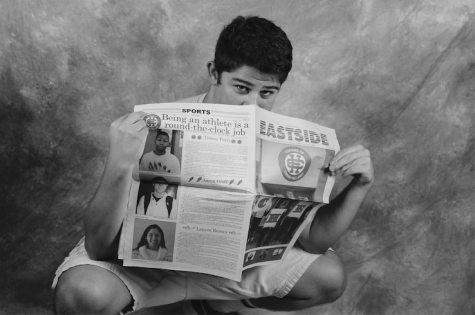
Jacob Borowsky, Eastside Editor-in-Chief considers himself a Shrek-savant first, and an editor second. His favorite activities include browsing local produce...


